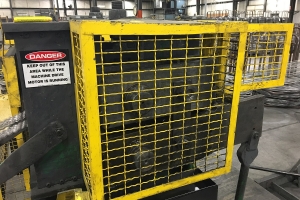Repeat citations against U.S. Minerals, Postal Service show OSHA will keep coming back
OSHA is delivering on its promise to organizations it considers to be “severe violators” – it is going to visit other facilities the organization owns to see if there are problems there as well.
One example is U.S. Minerals Co., against which OSHA has proposed penalties of more than $870,000 for citations at three facilities. The company was also placed in OSHA’s new Severe Violator Enforcement Program. The citations resulted from two inspections at the company’s Baldwin, Ill., facility, followed by one at its Harvey, La., location and one at its Galveston, Texas, facility.
A company placed in the Severe Violators Enforcement Program is subject to having all their facilities inspected to see if a problem found at one location is occurring elsewhere as well.
But OSHA is also showing up at multiple locations for companies not placed in the Severe Violators program.
The top example is a bit surprising: The U.S. Postal Service. OSHA has issued citations against at least 17 postal facilities in 2009 and 2010 with proposed penalties, mostly for electrical hazards, of about $4.5 million. As a result, OSHA issued a complaint asking that the Postal Service be ordered to correct electrical violations at 350 facilities. It is the first time the department has sought enterprise-wide relief as a remedy.
And this fall, OSHA cited a well-known retailer and proposed fines of more than $180,000 for failing to document and report injuries and illnesses at a distribution center. OSHA said the company willfully disregarded OSHA regulations. That followed citations in 2009 for willful recordkeeping violations at two other locations with proposed penalties of more than $100,000.
OSHA defines as a willful violation as one “committed with intentional, knowing or voluntary disregard for the law’s requirement, or plain indifference to employee safety and health.”
The lesson In this is clear for companies with multiple locations – your safety program must be consistent corporation wide. At the first sign of a problem at one location, you need to make sure it is not occurring elsewhere.
To keep up with the latest news about increased OSHA enforcement, subscribe to this blog and have it sent automatically to your Reader or email box.


